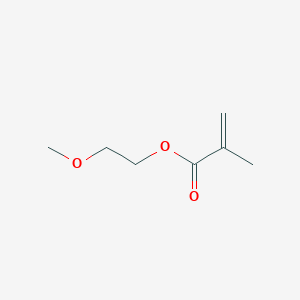-
Categories
-
Pharmaceutical Intermediates
-
Active Pharmaceutical Ingredients
-
Food Additives
- Industrial Coatings
- Agrochemicals
- Dyes and Pigments
- Surfactant
- Flavors and Fragrances
- Chemical Reagents
- Catalyst and Auxiliary
- Natural Products
- Inorganic Chemistry
-
Organic Chemistry
-
Biochemical Engineering
- Analytical Chemistry
- Cosmetic Ingredient
-
Pharmaceutical Intermediates
Promotion
ECHEMI Mall
Wholesale
Weekly Price
Exhibition
News
-
Trade Service
[ Focus on Chemical Machinery Equipment Network ] On October 12, the Chinese Academy of Cultural Heritage based the MEMS sensor- based real-time deformation and environmental monitoring project of Yingxian Wooden Pagoda to public bidding, purchasing wind speed sensors, wireless smart thermometers and hygrometers, wireless smart inclinometers, High-precision wireless intelligent inclinometers, wireless intelligent acquisition instruments and other instrumentation equipment monitor the deformation of wooden towers and the external environment in Yingxian County, Shanxi, to protect the safety of cultural relics
.
Chemical machinery equipment network hotspots pay attention to chemical machinery equipment sensor instrumentation.
As a treasure of traditional culture, the protection of cultural relics is naturally the top priority, and cultural relics can make people better feel the profoundness of traditional culture
.
However, when cultural relics are on display, special attention must be paid to the protection work
.
Preventive protection is to control the storage environment within a reasonable range through intervention means.
When the limit is broken, it must be controlled by external means
.
Among them, sensor technology is one of the application methods
.
.
However, when cultural relics are on display, special attention must be paid to the protection work
.
Preventive protection is to control the storage environment within a reasonable range through intervention means.
When the limit is broken, it must be controlled by external means
.
Among them, sensor technology is one of the application methods
.
Nowadays, there are more and more applications of sensor monitoring technology in the fields of cultural museum maintenance, cultural relics and scenic spots monitoring
.
For example, Dunhuang Mogao Grottoes has always attached great importance to the use of high-tech means to protect precious cultural relics
.
At present, when there are too many people entering the grotto every day, the temperature and humidity sensor monitoring device and other sensor monitoring devices in the cave will be reminded of exceeding the standard
.
At this time, the cave will be temporarily closed
.
.
For example, Dunhuang Mogao Grottoes has always attached great importance to the use of high-tech means to protect precious cultural relics
.
At present, when there are too many people entering the grotto every day, the temperature and humidity sensor monitoring device and other sensor monitoring devices in the cave will be reminded of exceeding the standard
.
At this time, the cave will be temporarily closed
.
For another example, the collection environment quality monitoring system currently used by the Hubei Provincial Museum can monitor all-weather collections of cultural relics
.
With the help of more than 100 different types of sensors, the temperature, humidity, illuminance, and ultraviolet rays of the storage environment can be monitored
.
.
With the help of more than 100 different types of sensors, the temperature, humidity, illuminance, and ultraviolet rays of the storage environment can be monitored
.
In addition to the cultural relics in the collection, more and more outdoor cultural relics have also used sensors to ensure safety
.
For example, more than 150 sensors such as displacement sensors, strain sensors, pressure sensors, temperature and humidity sensors, and wind speed sensors are installed on Hangzhou Liuhe Pagoda, which can fully grasp the development process of various structural diseases; Guangzhou Nanyue State Wooden Sluice Site has 64 installed Sensors, the monitoring content includes hydrological sensors, environmental sensors, temperature and humidity sensors, etc.
, and the root cause of the disease at the sluice site can be found through analysis
.
.
For example, more than 150 sensors such as displacement sensors, strain sensors, pressure sensors, temperature and humidity sensors, and wind speed sensors are installed on Hangzhou Liuhe Pagoda, which can fully grasp the development process of various structural diseases; Guangzhou Nanyue State Wooden Sluice Site has 64 installed Sensors, the monitoring content includes hydrological sensors, environmental sensors, temperature and humidity sensors, etc.
, and the root cause of the disease at the sluice site can be found through analysis
.
It can be seen that the application of sensors in the protection of cultural relics has been increasing
.
While the use of sensors protects cultural relics from man-made or external environmental damage, it is also driving the continuous development of sensor technology
.
.
While the use of sensors protects cultural relics from man-made or external environmental damage, it is also driving the continuous development of sensor technology
.
From structural sensors that use structural parameter changes to sense and transform signals, to solid-state sensors composed of solid components such as semiconductors, dielectrics, and magnetic materials, to smart sensors that combine microcomputer technology and detection technology, sensor technology It is also constantly moving forward
.
.
According to statistics, there are currently more than 4,000 museums in China, with more than 30 million cultural relics.
With the continuous emphasis on the preventive protection of cultural relics, the protection of these cultural relics will require the use of a large number of sensors.
The industry will also usher in new opportunities and challenges
.
With the continuous emphasis on the preventive protection of cultural relics, the protection of these cultural relics will require the use of a large number of sensors.
The industry will also usher in new opportunities and challenges
.
Original title: To protect the safety of cultural relics, sensor applications show "magic power"







